With 9.5 million tonnes of food dumped each year in the UK alone, Britons are increasingly looking for ways to “save leftovers” and avoid a climate crisis.
Now a trendy east London restaurant is aiming to change the way the food industry manages its share of edible waste.
Silo in Hackney claims to be the world’s first zero-waste restaurant and doesn’t even have a rubbish bin in its kitchen.
The restaurant has already become famous for showcasing dishes made from “invasive” non-native species such as gray squirrel and Japanese knotweed.
I decided to go and try their £75 tasting menu, which includes locally ground bread, wild rabbit meatballs and an interpretation of the famous Walkers sandwich.
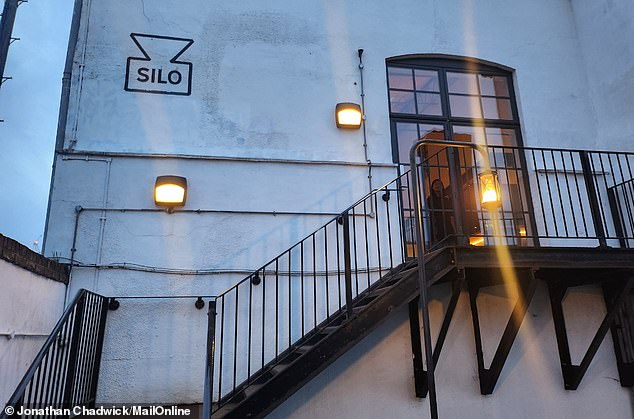
Silo in Hackney, east London, claims to be the world’s first zero-waste restaurant that doesn’t even have a bin in its kitchen.
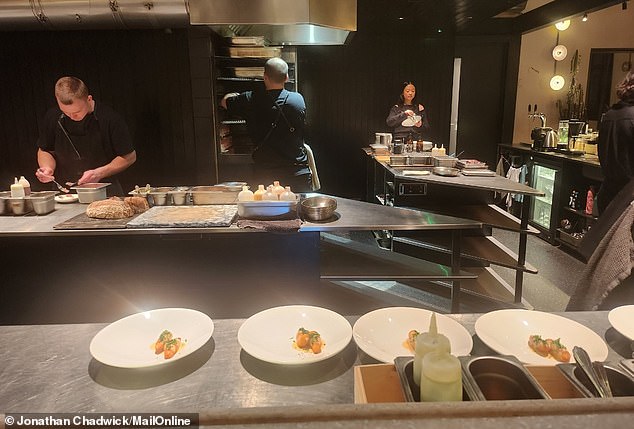

Silo claims it doesn’t even have a trash can, and sitting at the bar along the edge of the restaurant’s open kitchen I was able to confirm that this is indeed the case.
Silo is the creation of British chef Douglas McMaster, who previously worked at Heston Blumenthal’s famous Fat Duck.
McMaster says: “We are the world’s first zero-waste restaurant and our goal is to innovate the food industry while demonstrating respect: respect for the environment, respect for the way food is generated and respect for the food we give to our bodies.”
Silo claims it doesn’t even have a trash can, and sitting at the bar along the edge of the restaurant’s open kitchen I was able to confirm that this is indeed the case.
However, I noticed one of the chefs peeling potatoes and putting the remains in a plastic container.
I asked the waitress, ‘If there’s no container, what’s going to happen to those leftovers?’
He explained that all the vegetable peelings in the kitchen are combined and cooked in a pressure cooker to create a “vegetable molasses” for savory dishes.
Once the molasses is made, the remaining sludge is introduced into an “aerobic digester,” where microorganisms consume it.
Normally, when food scraps rot, they release methane, a powerful greenhouse gas that causes global warming.
Other food preparation scraps are put to good use in other clever ways: for example, off-cuts from freshly baked bread are used to make the ice cream sandwich, as well as the dough for tasty Asian-style dumplings.
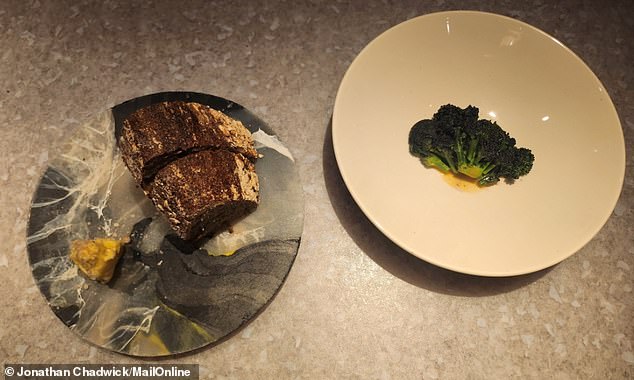

Pictured is homemade ‘Siloaf’ bread with butter (left) and purple broccoli with dairy garum (a Roman-inspired sauce made with whey and cheese rind).
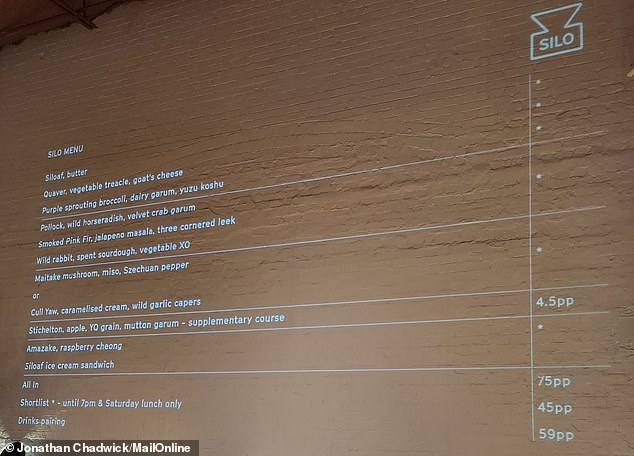

To save paper, a bulk copy of the menu is projected on the wall instead of printing it on individual sheets.
In essence, Silo transforms the remains of food preparation into new dishes, although it stops short of saving the remains that diners do not eat.
Aside from food, the zero-waste ethos is applied in other ways, including furniture and dishes that are apparently made from recycled materials.
Meanwhile, any products delivered to the location are transported in reusable containers and creations.
The waiter told me, ‘We explain to our suppliers that we can’t work with them if everything is wrapped in plastic.’
And to save paper, a bulk copy of the menu is projected on the wall instead of printing it on individual sheets.
My 10-course tasting menu started with homemade ‘Siloaf’ bread and butter and purple broccoli with dairy garum (a Roman-inspired sauce made with whey and cheese rind).
Next up was Silo’s take on one of Britain’s best-loved crisps, Walkers Quavers, made with leftover buttermilk and whey.
The huge triangular crunch is drizzled with bright orange vegetable molasses and then finely grated goat cheese.
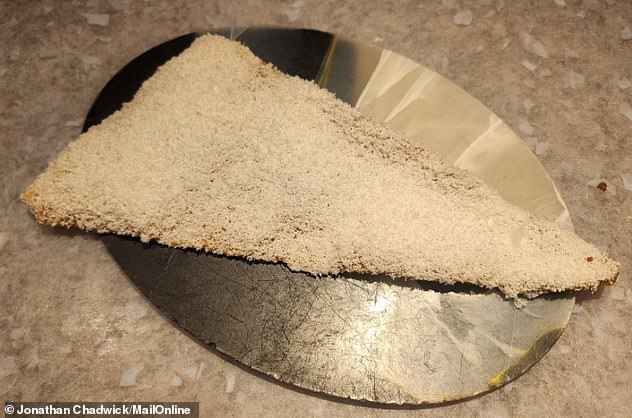

Inspired by one of Britain’s best-loved crisps, this homemade Quaver is covered in vegetable treacle and finely grated goat’s cheese.
Another highlight was raw haddock, lightly marinated and topped with cubes of wild horseradish dressed with crab sauce.
As is typical with tasting menus, all portions were small, although I suppose this also fits with the zero waste philosophy.
On the rare occasion that uneaten food returns to the kitchen, it is added to the aerobic digester, the head chef told me.
Possibly the tastiest dish of the night was the maitake mushroom, a little-known and little-used species with squiggly caps, served with miso sauce.
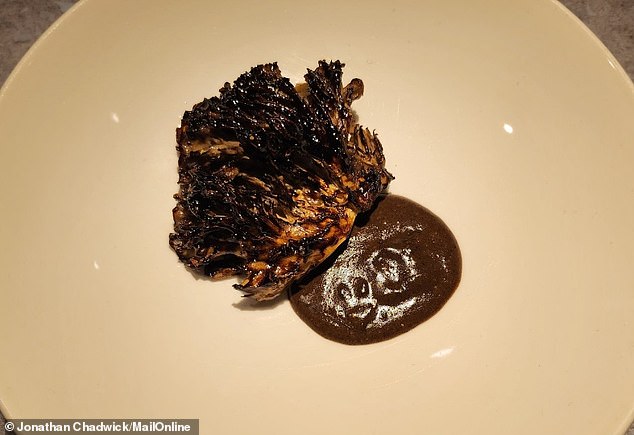

Pictured is maitake mushroom, a little-known and little-used species of mushroom with distinctive wavy caps, served with miso sauce.
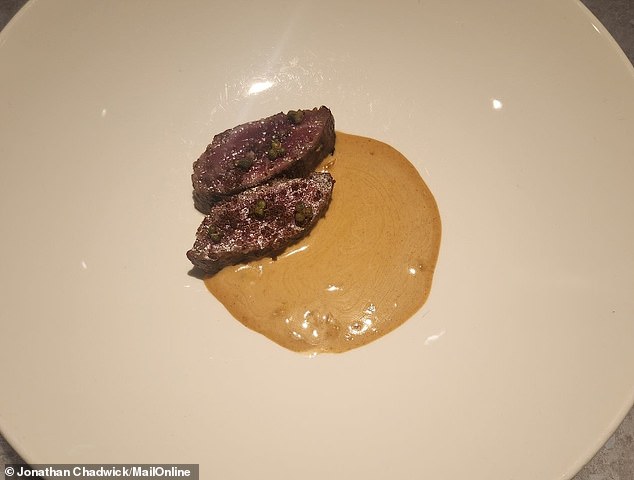

Main course: Cornish Cull Yaw lamb. As is usual in tasting menus, the portions are small, although this also fits with the zero waste philosophy.


Raw haddock, lightly marinated and topped with cubes of wild horseradish dressed with sauce made from crab
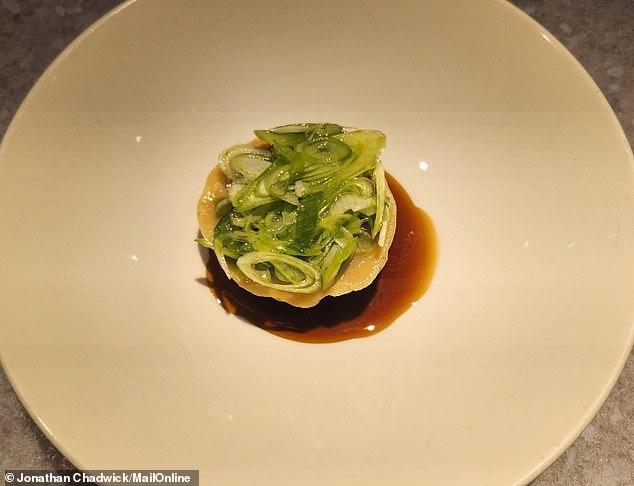

Trimmings from freshly baked bread are used to make the dough for tasty Asian-style meatballs (pictured, rabbit meatballs).
There was also a beautiful Cornish Cull Yaw lamb, rich, soft and juicy, served with a sweet cream sauce.
Silo is clearly breaking some green rules by including livestock meat on the menu, which has the highest greenhouse gas emissions of all foods.
The tasting menu ended with two puddings: the first, a dairy-free ice cream made with fermented rice and sake, the Japanese rice wine.
It had a powerful burst of refreshing citrus flavor that was reminiscent of some of my favorite popsicles from my childhood on a hot summer day.
But the most inventive offering of the night was the ice cream sandwich, which uses unused cuts of bread to make the two cookies.
More bread is left to soak in water for two days until it begins to ferment and turns into homemade liquid Marmite.
This is churned with leftover buttermilk (from Silo’s homemade butter) to make the delicious sweet and salty ice cream, which tasted like dulce de leche, the delicious South American sauce.


At Silo, offcuts from freshly baked bread and butter are used to make their ice cream sandwich (pictured).


Ice cream made from fermented rice and amazake (‘sweet sake’, the Japanese drink) topped with raspberry cheong (a Korean style of marinated fruit)
Although some dishes were tastier than others, many very clever ideas were put forward at Silo.
I’m a big fan of their zero waste concept and see no reason why other restaurants shouldn’t be inspired when thinking about new dishes.
Restaurants are just as guilty as homes, if not more so, when it comes to throwing pretty ingredients into the trash as if they were worthless.
Surely, with more than eight billion mouths to feed and constant warnings of an impending food crisis, we should show food more respect than that.
From now on I’ll be more aware of the leftovers in my refrigerator when I’m thinking about what to make for dinner.
